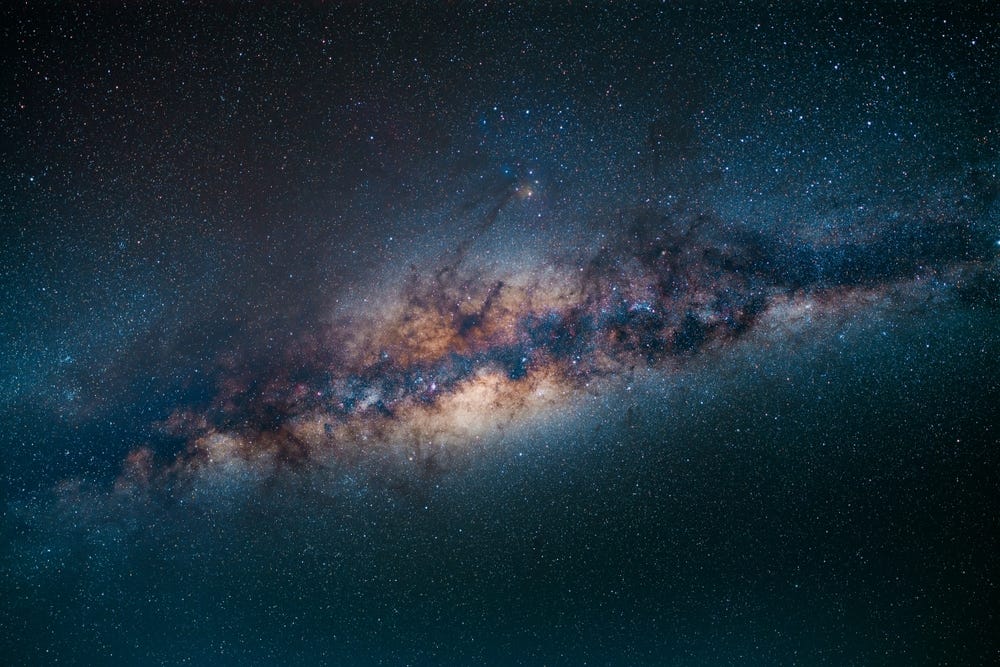Unparalleled bounty of oscillating red giant stars detected
The researchers detected the stars, whose rhythms arise from internal sound waves and provide the opening chords of a symphonic exploration

[August 5, 2021: University of Hawaii at Manoa]
An unprecedented collection of pulsating giant red stars has been identified by astronomers at the University of Hawaiʻi Institute for Astronomy (IfA). Using observations from NASA's Transiting Exoplanet Survey Satellite (TESS), the researchers detected the stars, whose rhythms arise from internal sound waves and provide the opening chords of a symphonic exploration of our galactic neighborhood.
Since its launch in 2018, TESS has primarily hunted for exoplanets–worlds beyond our solar system. But its sensitive measurements of changing stellar brightness make the telescope ideal for observing stellar oscillations or material within the internal structure of stars. It's an area of research called asteroseismology.
"Our initial result, using only a month of stellar measurements from TESS's first two years, shows that we can determine the masses and sizes of these oscillating giants with high precision that will only improve as TESS goes on," said Marc Hon, a NASA Hubble Fellow at IfA. "What's really unparalleled is that TESS's broad coverage allows us to make these measurements uniformly across almost the entire sky."
This large bounty of oscillating red giants will be used for unprecedented detailed studies using the ground-based telescopes on Maunakea.
"We have already started follow-up observations of some of the most intriguing oddballs we have uncovered in our large TESS dataset, which will tell us more about their origin," said Hon. "We have just scratched the surface of the treasure trove of data enabled by TESS."
Hon presented the research on Wednesday during the TESS Science Conference, an event held virtually, August 2–6 and supported by the Massachusetts Institute of Technology in Cambridge, where scientists discuss the latest results of the mission. He is the lead author of the study that is accepted for publication in the Astrophysical Journal, with co-authors including fellow IfA colleagues Jamie Tayar and Daniel Huber.
Widening opportunities
Oscillations in the sun were first observed in the 1960s. But solar-like oscillations in thousands of stars weren't detected until the French-led Convection, Rotation and Planetary Transits space telescope, which operated from 2006 to 2013. NASA's Kepler and K2 missions, which surveyed from 2009 to 2018, found tens of thousands of oscillating giants. TESS is expanding access to these oscillations through its observations in space.
"With a sample this large, giants that might occur only one percent of the time become pretty numerous," said Tayar, a Hubble Postdoctoral Fellow at IfA. "Now we can start thinking about finding even rarer stars."
TESS monitors large swaths of the sky for about a month at a time using its four cameras, covering about 75% of the sky during its two-year primary mission. Each camera captures a full image 24-by-24 degrees (48 times the size of the Moon in our sky) across, every 30 minutes. Since late summer 2020, the cameras have been collecting these images at an even faster rate.
The images are used to generate light curves—graphs of changing brightness—for nearly 24 million stars, each spanning 27 days, the length of time TESS stares at one patch of the sky. To sift through this immense accumulation of measurements, Hon and his colleagues taught a computer how to recognize pulsating giants. The team used machine learning, a form of artificial intelligence that trains computers to make decisions based on general patterns without explicitly programming them.
To train the system, the team used Kepler light curves for more than 150,000 stars, of which about 20,000 were oscillating red giants. When the neural network finished processing all of the TESS data, it had identified 158,505 pulsating giants.
The team determined colors and distances for each giant using data from the European Space Agency's Gaia mission, and plotted the masses of these stars across the sky. A fundamental prediction in galactic astronomy is that younger, higher-mass stars should lie closer to the plane of the galaxy, marked by the high density of stars that create the glow of the Milky Way in the night sky.
"Our map demonstrates for the first time that this is indeed the case across nearly the whole sky," said Huber. "With the help of Gaia, TESS has now given us tickets to a red giant concert in the sky."
Like these kind of feel good stories? Get the Brighter Side of News' newsletter.
Tags: #New_Discoveries, #Space, #Stars, #Astronomy, #The_Brighter_Side_of_News



